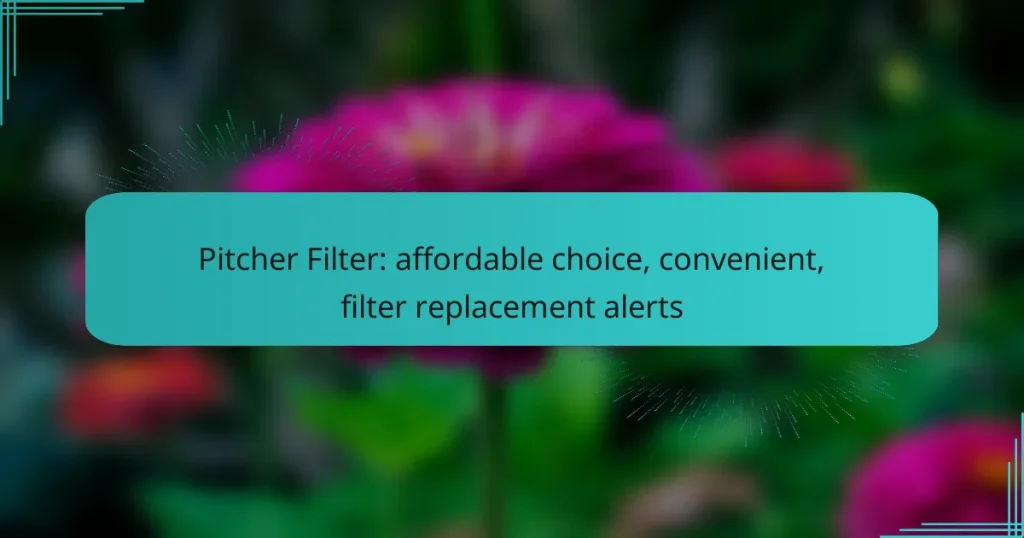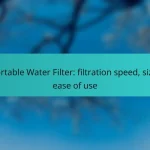Using a pitcher filter is an affordable and convenient way to enhance the quality of your drinking water. These filters effectively reduce contaminants and improve taste, while also providing helpful alerts for when it’s time to replace the filter. Ideal for households, they offer a practical solution for everyday water purification.
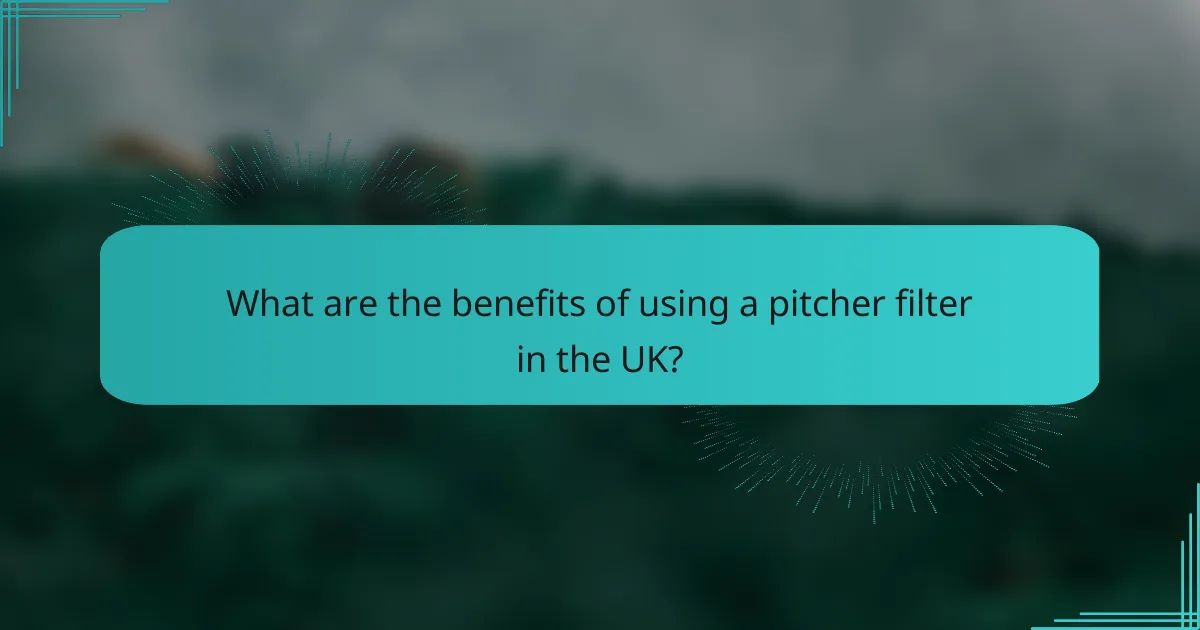
What are the benefits of using a pitcher filter in the UK?
Using a pitcher filter in the UK offers an affordable and practical solution for improving drinking water quality. These filters are designed to reduce contaminants, enhance taste, and provide convenient alerts for filter replacements, making them an ideal choice for households.
Cost-effective water filtration
Pitcher filters are generally more affordable than other water filtration systems, such as under-sink or whole-house filters. The initial investment is low, often ranging from £15 to £30, with replacement filters costing around £5 to £15 each. This makes them accessible for most households looking to improve their water quality without a significant financial commitment.
Additionally, pitcher filters can save money in the long run by reducing the need for bottled water. With the cost of bottled water adding up, using a pitcher filter can lead to substantial savings over time.
Convenience of use
One of the main advantages of pitcher filters is their ease of use. Simply fill the pitcher with tap water, and the filter will do the rest, providing clean water within minutes. Most models are designed to fit easily in a refrigerator door, ensuring that chilled, filtered water is always available.
Many pitcher filters also come with built-in filter replacement alerts, which notify users when it’s time to change the filter. This feature helps maintain optimal filtration performance without the guesswork, ensuring that you always have access to clean water.
Improved taste and quality
Pitcher filters effectively reduce common contaminants such as chlorine, sediment, and heavy metals, which can negatively impact the taste and quality of tap water. By filtering out these impurities, the water becomes more palatable and refreshing, encouraging increased hydration.
In the UK, where tap water quality can vary, using a pitcher filter can significantly enhance the overall drinking experience. Many users report a noticeable difference in taste, making filtered water a preferred choice for cooking and beverages.

How do pitcher filters work?
Pitcher filters work by using a combination of filtration media to remove impurities from tap water, making it cleaner and better tasting. These filters typically reduce contaminants like chlorine, sediment, and some heavy metals, providing a convenient solution for everyday water purification.
Filtration process explained
The filtration process in pitcher filters generally involves multiple stages. Water first passes through a pre-filter that captures larger particles such as sediment and rust. Following this, it flows through activated carbon, which absorbs chlorine and other chemicals, improving taste and odor.
After the initial filtration, some pitchers include additional layers that target specific contaminants, such as lead or mercury. This multi-stage approach enhances the overall effectiveness of the filtration, ensuring cleaner water for consumption.
Types of filter media used
Common filter media in pitcher filters include activated carbon, ion exchange resin, and sometimes ceramic. Activated carbon is effective at removing chlorine and organic compounds, while ion exchange resin can reduce hardness and heavy metals.
Some advanced filters may incorporate additional materials like zeolite or KDF (Kinetic Degradation Fluxion) media to target specific contaminants. When selecting a pitcher filter, consider the types of media used, as this impacts the filter’s effectiveness against particular impurities.
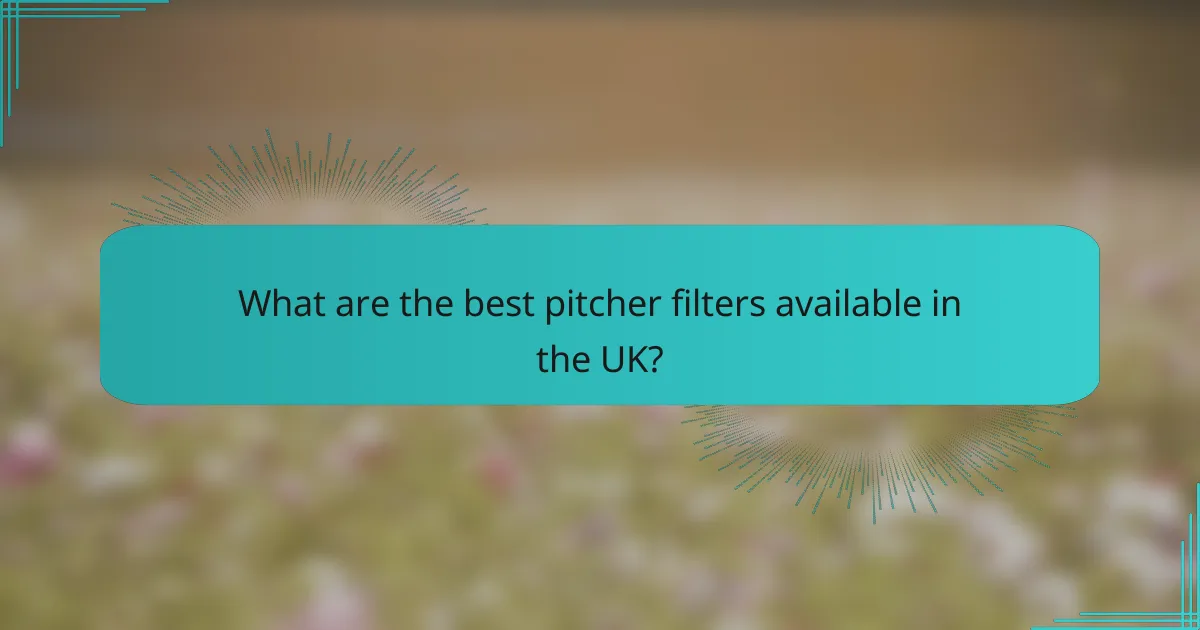
What are the best pitcher filters available in the UK?
The best pitcher filters in the UK offer affordable options for clean drinking water, with features like convenient filter replacement alerts. These filters help reduce contaminants and improve taste, making them a practical choice for households.
Brita Classic Pitcher
The Brita Classic Pitcher is a popular choice known for its effectiveness and affordability. It uses activated carbon and ion exchange resin to reduce chlorine, limescale, and other impurities, improving the taste of tap water.
One of its key features is the Easy Fill lid, which allows for convenient refilling. Additionally, the filter replacement indicator alerts users when it’s time to change the filter, ensuring optimal performance.
ZeroWater Pitcher
The ZeroWater Pitcher stands out for its advanced filtration system that removes nearly all dissolved solids from water, providing a higher level of purification. It includes a five-stage filtration process, making it ideal for those seeking the purest water possible.
This pitcher also features a TDS (Total Dissolved Solids) meter, allowing users to measure the water quality directly. While it may be slightly more expensive than others, the thorough filtration can justify the cost for many consumers.
Pur Classic Pitcher
The Pur Classic Pitcher is designed to reduce contaminants such as lead and mercury while improving taste. It utilizes a unique filter technology that is effective against a wide range of impurities.
With a sleek design and an easy-to-use flip-top lid, this pitcher is convenient for daily use. The filter change light indicator helps users keep track of when to replace the filter, ensuring consistent water quality.
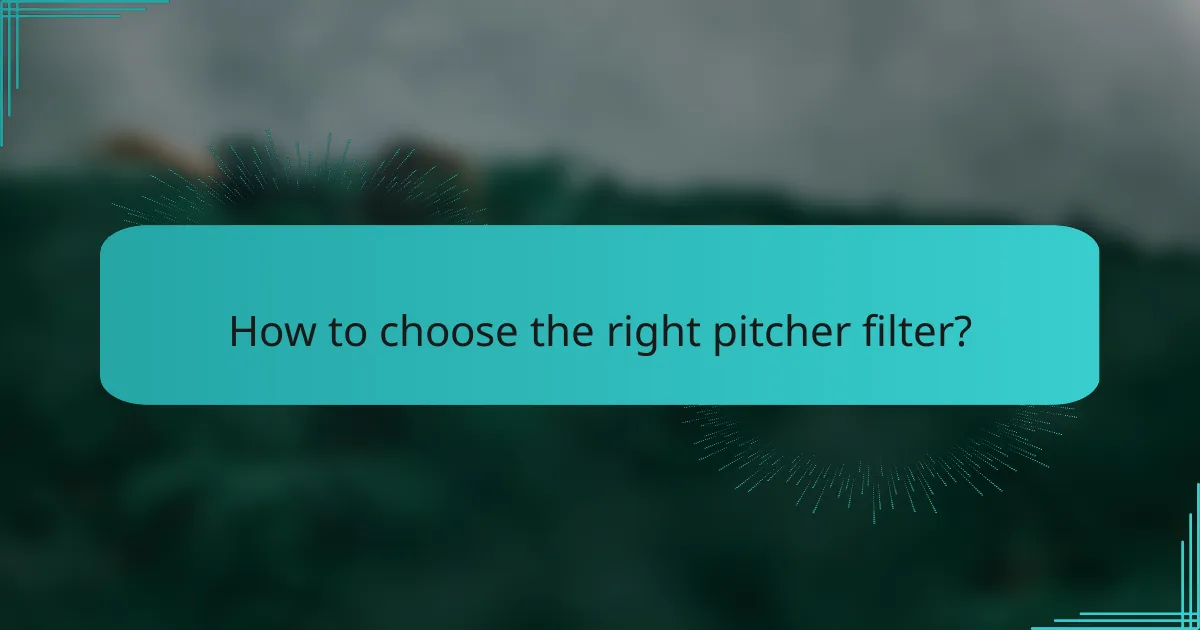
How to choose the right pitcher filter?
Choosing the right pitcher filter involves considering factors like filter lifespan, water quality needs, and the size of the pitcher. These elements will help you select a filter that is both affordable and convenient, ensuring you receive timely filter replacement alerts.
Consider filter lifespan
Filter lifespan indicates how long a filter can effectively purify water before needing replacement. Most pitcher filters last between two to six months, depending on usage and water quality. Look for filters that provide alerts or indicators to remind you when it’s time for a change.
Choosing a filter with a longer lifespan can save you money in the long run, but ensure it meets your water quality needs. Regularly check the manufacturer’s recommendations to avoid reduced filtration performance.
Evaluate water quality needs
Your water quality needs are crucial in selecting the right pitcher filter. If your tap water has high levels of chlorine, lead, or other contaminants, opt for filters certified to remove those specific impurities. Look for certifications from organizations like NSF International for assurance.
Consider testing your water if you’re unsure about its quality. Many local health departments offer testing services, which can guide you in choosing a filter that effectively addresses your specific concerns.
Assess capacity and size
The capacity and size of the pitcher filter should match your household’s water consumption. Standard pitcher filters typically hold around 6 to 10 cups of water, which may be sufficient for small families. Larger households might benefit from pitchers with a higher capacity to reduce frequent refilling.
Additionally, consider the physical space where you’ll store the pitcher. Ensure it fits comfortably in your refrigerator or on your countertop, allowing for easy access while maintaining a tidy kitchen environment.
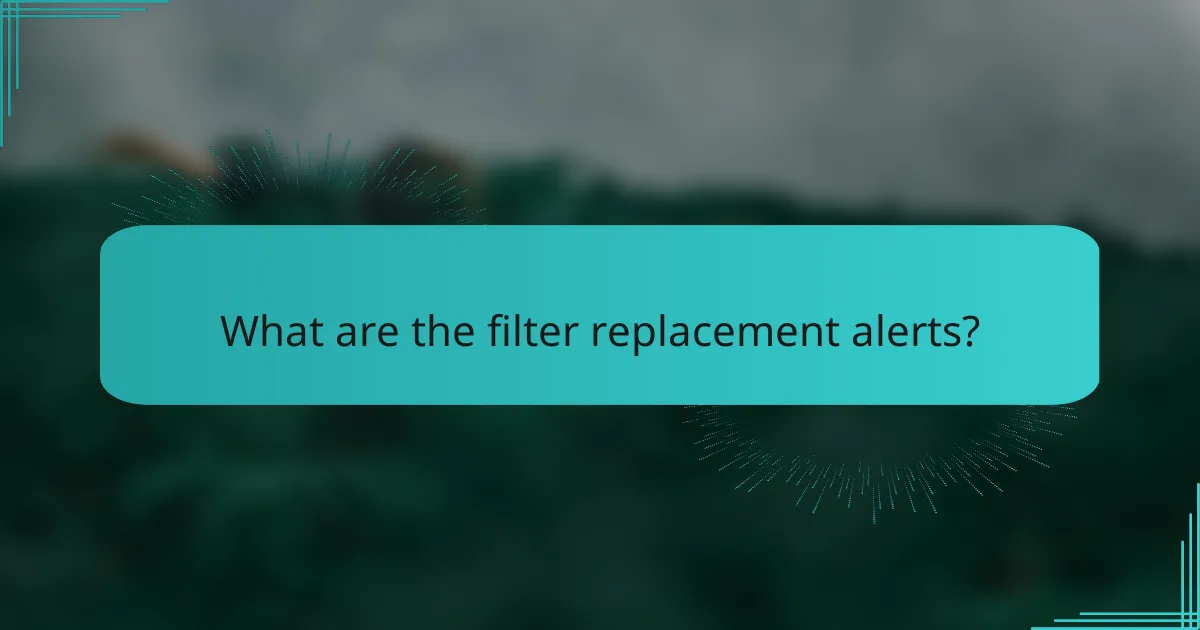
What are the filter replacement alerts?
Filter replacement alerts notify users when it’s time to change the water filter in a pitcher. These alerts help ensure optimal water quality and taste by preventing the use of worn-out filters.
Smart technology integration
Many modern pitcher filters come equipped with smart technology that tracks filter usage and notifies users via a smartphone app or built-in display. This integration allows for real-time monitoring and ensures that users are informed well in advance of when a replacement is needed.
For example, some systems may use a simple color-coded indicator that changes as the filter nears the end of its lifespan, while others may send push notifications directly to your device. This convenience helps maintain water quality without the hassle of manual checks.
Manual tracking methods
If your pitcher filter does not have smart technology, you can still effectively track filter replacements manually. One common method is to mark the date of installation on a calendar or set a reminder on your phone for every two to three months, depending on usage.
Another approach is to keep a log of when you replace filters, noting the brand and model for future reference. This practice helps you stay organized and ensures you replace filters regularly, maintaining the quality of your drinking water.

How to maintain a pitcher filter?
Maintaining a pitcher filter involves regular cleaning and timely replacement of the filter cartridge to ensure optimal water quality. Following a few simple steps can help you keep your pitcher filter functioning effectively and conveniently.
Regular Cleaning
To maintain your pitcher filter, clean the pitcher regularly with warm, soapy water. Avoid using abrasive cleaners that could scratch the surface. Rinse thoroughly to remove any soap residue, which can affect the taste of the water.
It’s advisable to clean the pitcher at least once a week, especially if it’s used frequently. This prevents the buildup of bacteria and ensures that the water remains fresh.
Filter Replacement Alerts
Many modern pitcher filters come with built-in alerts to notify you when it’s time to replace the filter. These alerts can be based on time or the volume of water filtered. Pay attention to these notifications to maintain water quality.
If your pitcher does not have an alert system, a good rule of thumb is to replace the filter every two to three months, depending on usage. Keeping track of your filter replacement schedule can help you avoid any lapses in water quality.
Choosing Affordable Filters
When selecting a pitcher filter, consider both the initial cost and the long-term value of replacement filters. Look for brands that offer affordable replacement cartridges, as this can significantly reduce your overall expenses.
Compare the prices of different brands and check for bulk purchase options, which often provide discounts. Many retailers offer promotions, so keep an eye out for sales to maximize savings.
